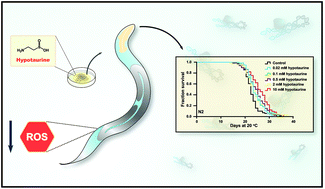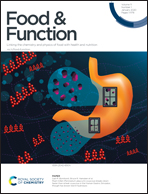Hypotaurine promotes longevity and stress tolerance via the stress response factors DAF-16/FOXO and SKN-1/NRF2 in Caenorhabditis elegans†
Abstract
Hypotaurine, an important sulfur-containing and nonpeptidic amino acid, is a precursor of taurine and an antioxidant. Our previous study indicated that hypotaurine levels are associated with the ageing of Caenorhabditis elegans (C. elegans). However, whether hypotaurine plays a role in the lifespan regulation of C. elegans and the mechanism remains undetermined. Here, we found that hypotaurine enhances oxidative stress resistance and ameliorates ageing in C. elegans. Our results show that hypotaurine regulates a variety of pathways and leads to the upregulation of some age-related genes to extend lifespan. We also found that the stress response-related transcription factors DAF-16/FOXO and SKN-1/NRF2 contribute to the beneficial longevity conferred by hypotaurine. Moreover, our results demonstrate that hypotaurine induced lifespan extension by regulating the insulin/IGF-1 signaling (IIS) pathway, the reproductive signaling pathway and DR-like mechanisms. Additionally, our results also indicated that mitochondrial function also plays a crucial role in the lifespan extension induced by hypotaurine. Taken together, these data indicate that hypotaurine delays the ageing of C. elegans, due, at least in part, to its antioxidant activity, which in turn regulates IIS, and reproductive and DR-related pathways, thereby inducing the activity of the transcription factors DAF-16 and SKN-1.



 Please wait while we load your content...
Please wait while we load your content...